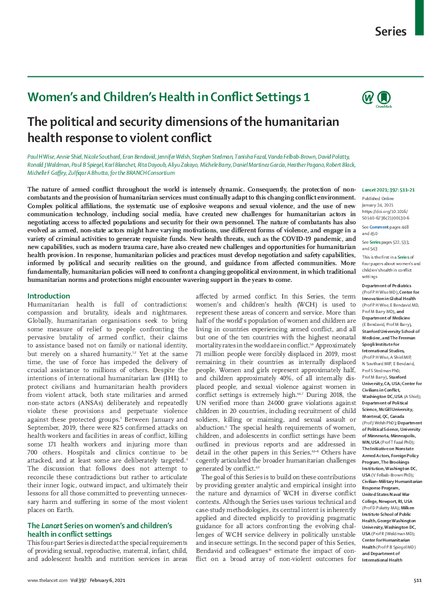
The nature of armed conflict throughout the world is intensely dynamic. Consequently, the protection of noncombatants and the provision of humanitarian services must continually adapt to this changing conflict environment. Complex political affiliations, the systematic use of explosive weapons and sexual violence, and the use of new communication technology, including social media, have created new challenges for humanitarian actors in negotiating access to affected populations and security for their own personnel. The nature of combatants has also evolved as armed, non-state actors might have varying motivations, use different forms of violence, and engage in a variety of criminal activities to generate requisite funds. New health threats, such as the COVID-19 pandemic, and new capabilities, such as modern trauma care, have also created new challenges and opportunities for humanitarian health provision. In response, humanitarian policies and practices must develop negotiation and safety capabilities, informed by political and security realities on the ground, and guidance from affected communities. More fundamentally, humanitarian policies will need to confront a changing geopolitical environment, in which traditional humanitarian norms and protections might encounter wavering support in the years to come.